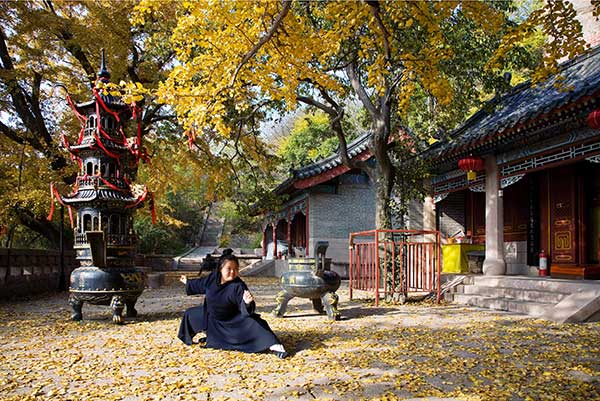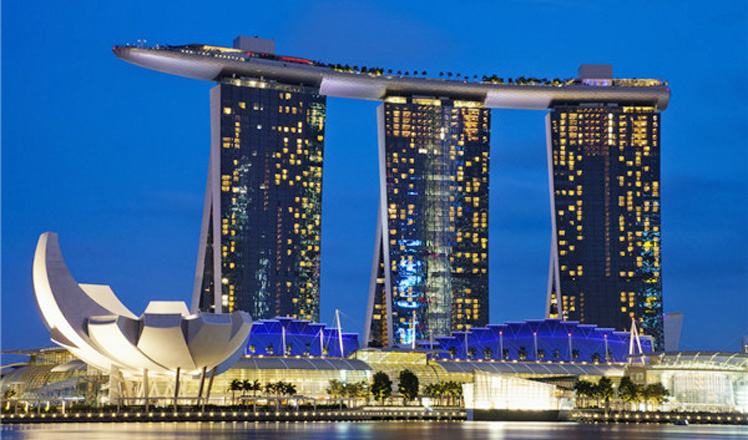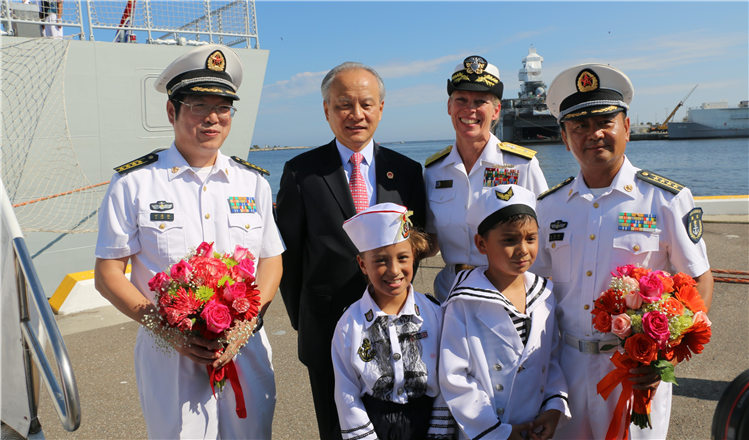Cultural riviera
Updated: 2015-11-09 08:01
By Erik Nilsson(China Daily)
|
||||||||
 |
|
A Taoist follower practices martial arts at Taiqinggong temple.[Liu Yonglai/Zhang Yan/Bo Keguo/China Daily] |
A different living legacy of Taiqinggong's first pilgrims is that it still functions as a religious establishment. Monks' chants reverberate through the forests.
Near the temple, visitors can eat farm-fresh meals, seated on ancient kang beds in stone village houses that roll down Laoshan, while gazing at the sparkling sea.
Another shoreline rock structure is the Old Stone Man, a rock formation not only named for its shape but also for its folklore.
The fable says that the Dragon King abducted a farm girl as his concubine. Her father was so distressed that he sat gazing at the whitecaps, awaiting her return, until he fossilized. His daughter was so distraught that she committed suicide.
(Incidentally, Tian'anmen's Monument to the People's Heroes is sculpted from Laoshan rock.)
While Laoshan is the most famous alp fringing Qingdao, downtown's Xiaoyu (Small Fish) Mount offers the most panoramic view of the city smashing into the seashore.
The 18-meter-high tower atop the hill offers vistas of red roofs, green trees and blue skies and seas.
Downtown is roughly divided into east and west by an abrupt cutoff of skyscrapers delineated by a canopy of trees punctuated with older, red-tiled roofs.
While projecting a Mediterranean feel, the buildings hail to the German-concession period.
Yet the architectural texture becomes more complex in the bayside Badaguan, or Eight Roads historical zone. (Actually, there are 10 lanes, each lined with a different tree species.)
It houses structures erected in the first three decades of the 20th century, when wealthy people from 20 countries constructed houses in their national styles.
Or didn't.
Take the Granite Castle built in ancient Greek and Roman styles in 1931 for a Russian aristocrat that was later home to a British businessman and used for formal receptions after liberation.
Or the Princess House-known mostly for Denmark's prince Axel's 1930 visit with his wife, Margaretha-rendered in Nordic style by a Russian designer.
It has been repurposed-perhaps oddly but happily-as a Chinese shrine to fairy-tale virtuoso Hans Christian Andersen. That is, with a gallery, themed coffee shop and statues of pink castles and (of course?) Minnie Mouse.
The question becomes: Why not?
The answer is: The place is literally crawling with kids.
- Thwarted homecoming of soldiers' remains triggers emotional breakdown
- China's first innovative drug approved NDA in the US
- China lists, names five for judicial intervention
- Scientists decode panda language
- Beijing embraces first snow of the season
- New policy expected to bring spike in births, and then fewer

 History of Coca-Cola on display in Shanghai
History of Coca-Cola on display in Shanghai
 Beijing embraces first snow of the season
Beijing embraces first snow of the season
 10 reasons why Chinese tourists like Singapore
10 reasons why Chinese tourists like Singapore
 Negotiation is 'right approach'
Negotiation is 'right approach'
 Top 10 Asian economies with highest English proficiency
Top 10 Asian economies with highest English proficiency
 PLA Navy fleet pays visit to Florida
PLA Navy fleet pays visit to Florida
 Top Gun: Breathtaking moments of China Air Force
Top Gun: Breathtaking moments of China Air Force
 Peace Ark docks at San Diego
Peace Ark docks at San Diego
Most Viewed
Editor's Picks

|

|

|

|

|

|
Today's Top News
China, not Canada, is top US trade partner
Tu first Chinese to win Nobel Prize in Medicine
Huntsman says Sino-US relationship needs common goals
Xi pledges $2 billion to help developing countries
Young people from US look forward to Xi's state visit: Survey
US to accept more refugees than planned
Li calls on State-owned firms to tap more global markets
Apple's iOS App Store suffers first major attack
US Weekly

|

|







